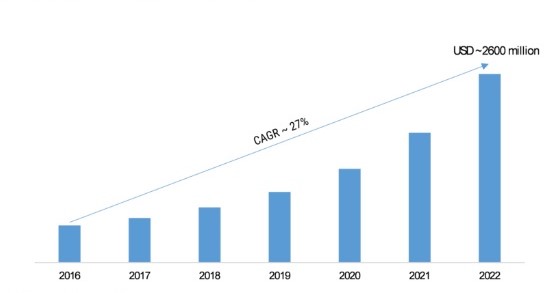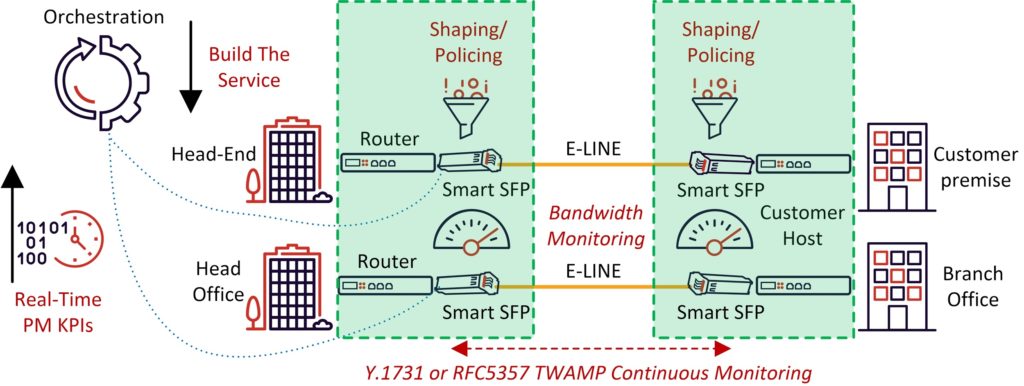The CPE and NID Past
For the last decade, the traditional CPE/NID global market has been saturated with dozens of ‘me-too’ box-based vendor solutions, which struggle to differentiate themselves from one another and fail to offer any unique value proposition for customers. The price is often the main deciding factor when customers are making purchasing decisions in these cases.

This used to be a very lucrative market but as vendor costs for these types of products have increased, and in parallel, as customers have applied pressure for yearly price erosion, creativity and innovation have often been stifled due to a lack of available R&D dollars when all other aspects have been accounted for. There are of course some exceptions: for instance, the MEA regions still present a healthy demand for these traditional products as does the North American market.
The ongoing COVID-19 pandemic has hit this market particularly hard as many scheduled site visits have had to be postponed, with the obvious knock-on effect it has had on end-customer and service provider confidence and their subsequent behavior and decision-making towards their CPE/NID investments. This has highlighted the possibility that perhaps the traditional way of deploying a 19” rack-mount box for such functions is in some way sub-optimal for 2020 and beyond. Perhaps there is a better way of doing things.
The present and future for the CPE and NID market
Many vendors are working on next-generation CPE/NID platforms, but it is clear that the market potential for these types of devices is somewhat different compared to say 5 to 10 years ago. Virtual NIDs, or vCPE, is a topic talked about a lot in the industry, but the reality is that few vendors have productized such solutions and made them commercially successful.
Universal CPE is another hot-topic that seems to be on everyone’s lips but uptake has been slow and there are considerations around future-proofing and security to be addressed in many scenarios.
What remains is a need for traditional CPE/NID type functionality but at a different (lower) price point and with some other differentiation and unique value over the plethora of solutions already on the market. For some levels of capability, hardware is still needed on the customer premises, but what if it could be in a different package? More
With global growth forecasts for virtual CPE solutions at a very modest 27% CAGR for the next few years, it would seem that the market is craving slightly different solutions and vendors who can think outside of the traditional CPE ’19 “box” will have a part to play.

Source: Market Research Future
Doing things more effectively with Smart Service Demarcation
Smart Service Demarcation takes a different approach and leverages the SFP form-factor to create a device with a minimal CPE/NID feature set but which is adequate for a high percentage of customer cases.
Typical existing site deployments include the end-customer point of demarcation (often a small switch or router) and then the service provider comes along and adds their own demarcation device (CPE/NID), thus consuming at least 2 RU of space, 2 times the amount of site power (assume 2 x 50W),generating heat that needs to be controlled within the accommodation, and often resulting in 2 site visits for each device to be deployed and commissioned. All this adds up to CapEx and OpEx costs that could be avoided.
What if the service provider could achieve their demarcation via a pluggable SFP device that resided within the existing end-customer router/switch or other host device?
Several vendors offer so-called ‘smart SFPs’ that focus on distributed test and measurement capabilities. Some offer performance assurance feature suites. One vendor, Accedian, offers both of these, along with service demarcation capabilities, as shown below.

In order to satisfy the basic functional requirements of service demarcation, the level of capabilities required can be split into two broad categories.
Firstly, basic performance assurance
There is of course the foundational performance assurance aspect, which requires standard-based active monitoring via RFC5357 TWAMP or Y.1731 – the “smart SFP” is usually a responder but in some cases could be a generator of active monitoring flows.
The ability to measure traffic flow bandwidth and utilization, and also to generate out-of-service test traffic, are two other common capabilities that add value to the service demarcation use case. This capability is often sufficient to provide demarcation in the simplest cases as it provides the service provider with a clear reference point for handing over services to the end user, which is supported via performance management (PM) KPIs.
Secondly, real value-add in an SFP form-factor
Furthermore, and this is where significant additional value can be offered, this functionality is available in an SFP form-factor, including the more traditional service creation and termination features often seen in full-sized NID or CPE products. This level of functionality is typically based around pushing, popping, or replacing one or more VLAN tags, remapping of Class of Service (CoS) markers, some simple rate limiting by way of policing or shaping, and, in some cases, supporting the MEF per-UNI, per-NII and per-EVC service parameters.
The market
The market for this kind of smart service demarcation is expected to grow significantly in the coming years, driven by a desire to reduce the physical footprint on customer premise locations, lower power consumption, speed up deployment activities and enable more efficient troubleshooting to drive down MTTR. There are of course challenges with this approach regarding: interworking between the ‘smart SFP’ and the host devices and the potential for invalidating warranties or breaking SLAs with 3rd parties. However, it is believed that the financial and operational benefits to be gained by taking this smart service demarcation approach far outweigh the potential issues – where there’s a willingness to achieve something with a clear benefit in mind there is often a way to make it happen.
Accedian Skylight’s unique high performance, scalable and compact 5G-ready devices combine service demarcation with granular, scalable monitoring and performance assurance for 5G services.

 Improved delivery, better visibility: How Accedian and VMware are working together to help CSPs navigate the 5G world
Improved delivery, better visibility: How Accedian and VMware are working together to help CSPs navigate the 5G world
 Adding a new dimension of visibility to the Cisco Full-Stack Observability portfolio with Accedian Skylight
Adding a new dimension of visibility to the Cisco Full-Stack Observability portfolio with Accedian Skylight